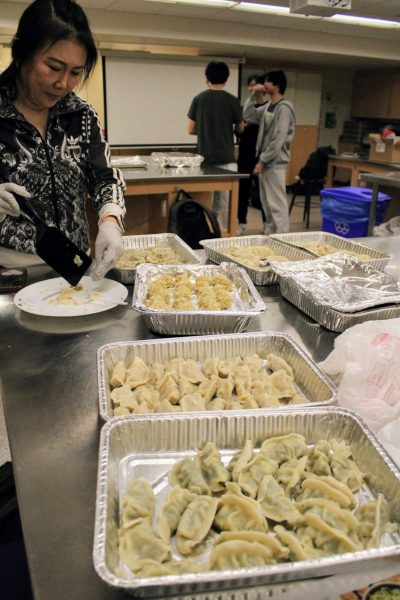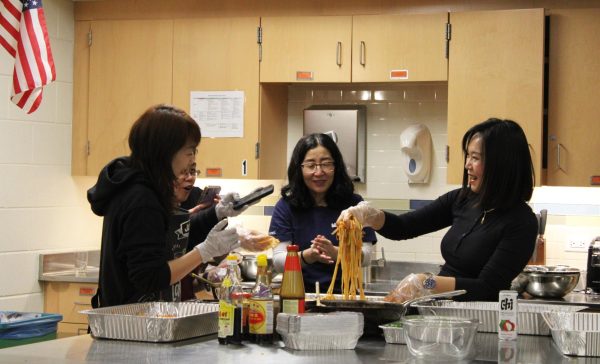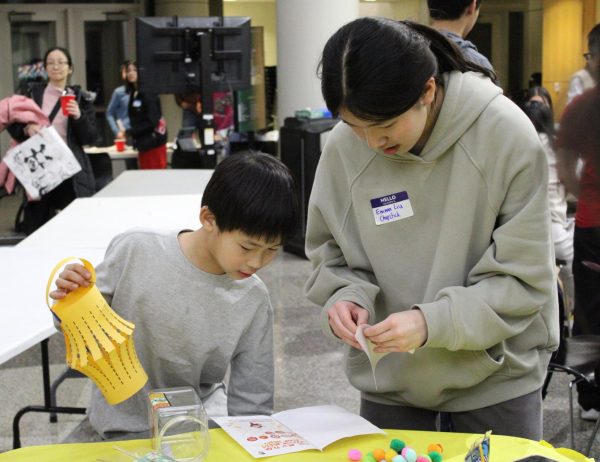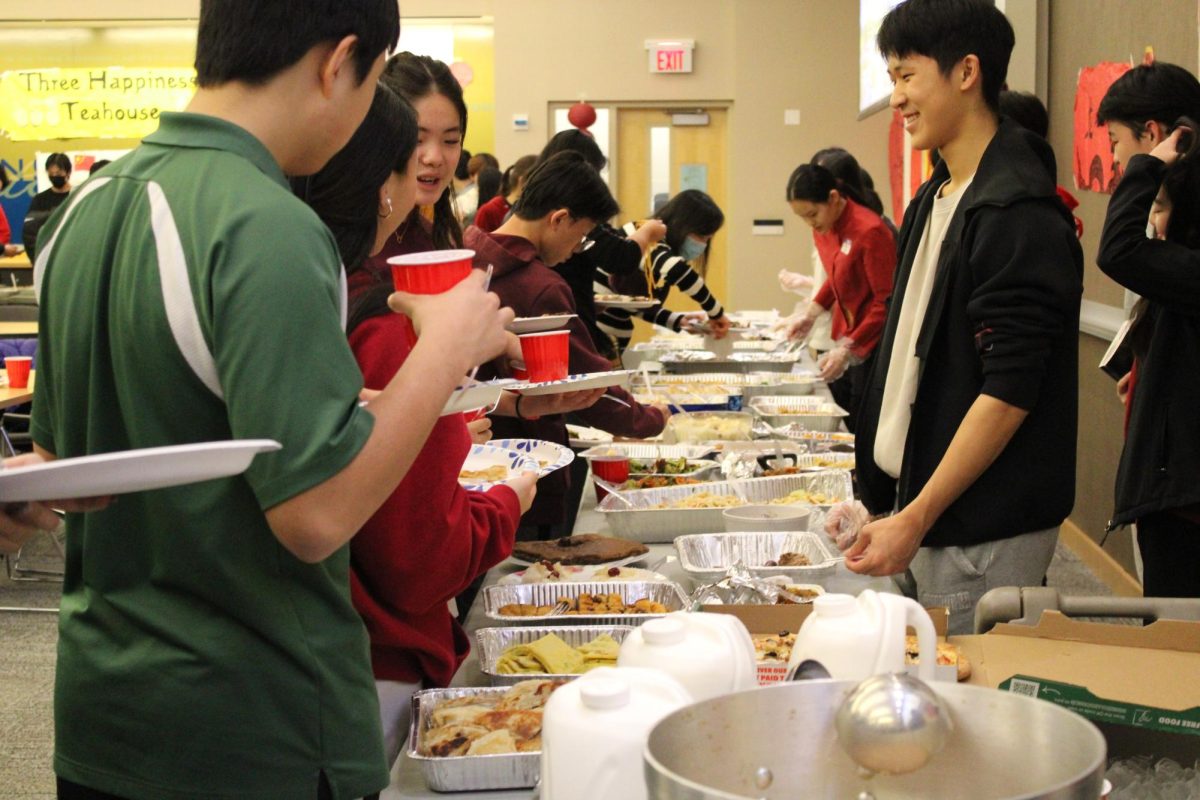
This year marks the second one in a row in which I have shamelessly ditched fencing practice to attend Stevenson’s annual Chinese New Year celebration. And if I weren’t a senior, I would make that same decision again next year in a heartbeat.
The free food is always a huge draw for me and every other attendee I talked to. Every year, platter after platter of food is laid out buffet-style on a long line of foldable tables.
While a lot of it is Chinese, there are also some foods that are not: dumplings of all types with all sorts of fillings including pork, shrimp, and pea shoots; cold noodles mixed with vegetables and coated in a shiny red sauce; eel sushi; savory scallion pancakes, divvied neatly into quarters; vegetable pizza, still in the box; spring rolls; egg rolls; giant vats of sweetened milk tea (though, sadly, without any tapioca pearls); Lays chips; Capri-Suns; that new carbonated Chi Forest drink flying off the shelves of Costco; and so much more.
Much of it is made in the food lab after school by National Chinese Honor Society (NCHS), Chinese Club, and Taiwanese Club members. The austere space was flooded with an influx of people, decked in varying amounts of bright red: twenty volunteers that had managed to nab a spot on the Sign-Up Genius before spots filled, along with club e-board members and a sponsor, and a few parent volunteers.
There were a lot of frozen foods that just needed to be heated up, like the pizza bites, as well as some dishes that were made mostly from scratch with fresh foods, like the egg-and-scallion pancakes. For the more complex recipes, parent volunteers were present to help, guiding the students through the steps. They largely spoke in Mandarin to everyone there; Since I took Spanish and Latin, it is always a welcome but novel experience to practice my Mandarin skills.

Regardless of the method of preparation, everything in the food lab tasted really good when I tried them. Getting to sample the foods that were made while we worked is also one aspect that makes cooking with these clubs (for both the Lunar New Year and other events like the dumpling-making night) such a c
onstructive experience: while there is certainly a focus on being productive, there is also a humaneness to how volunteers are treated, and it fosters curiosity for the culture as a whole.
All the food we made then got sent up to 2104, where the food prepared at Stevenson joined dishes brought in by the community, as well as prepackaged snacks and beverages. Both years, some generous stranger has brought in sushi, which I’ve greatly enjoyed eating, but is also, considering the price of sushi these days, a testament to how much some in the local community care about these celebrations.
Even more than the food, though, is this almost indescribable sense of connectedness that permeates the event. I grew up with Chinese New Year being talked about in school as if it were this quasi-exotic, hypothetical holiday that existed in theory, but it never really felt like it fully permeated the mainstream culture.
In contrast, seeing the Lunar New Year and other cultural events celebrated so readily at Stevenson has helped me feel a sense of cultural belonging. Seeing room 2104 crammed full of people—lines snaked all around the room for food, which ultimately ran out pretty early on, and the many rows of tables were all filled—who were there to celebrate and experience a Chinese tradition (and get free food) made me feel a rush of pride for my culture.

A lot of the time, it feels like China comes with negative connotations in America, like it’s the land of communism, COVID, and cheap and therefore low-quality products. As one of our sources said in my news story about preparations for this celebration, it was really cool to be able to witness all these aspects I love about my culture on display and being shared instead, and to see it at such a large scale.
I know I’ve mentioned the food a lot, but it’s definitely one of my favorite parts of being Chinese, and pretty much every other Chinese American I’ve asked has said the same thing. Food is such an approachable way to be introduced to new cultures, or even new aspects of a culture you’ve grown up with. For example, my friend taught me to make a type of Chinese pancake during the Chinese New Year cooking that I’ve never had or heard of before, and earlier this year, she tried dim sum for the first time with me at a restaurant I loved.
If you wanted, you could trace the food back and dissect the innate cultural history that it is steeped in—the parts of China that had wheat versus rice and used them in the flour of those regions, the story of the emperor into whose hot water fell a leaf, thereby inventing tea. At an event like Stevenson’s Chinese New Year celebration, however, you’re presented with the food at its most surface-level, without the rich history, and in some cases, without even its name.
You’re asked to take a chance, and just try it. I know for me, I genuinely loved everything I ate, even the dishes I didn’t recognize. I think discovering a love of any part of another culture, even one as seemingly superficial as the food, is magical.
And Stevenson’s celebration excels at fomenting these experiences. Bite by bite, we connect.
Ultimately, this Stevenson Chinese New Year tradition melds both the best parts of being Chinese and growing up in America—the pizza and dumplings, playing Uno and learning Chinese calligraphy, the plethora of resources Stevenson has to offer and the students and community to use them—and I find that amazing.


